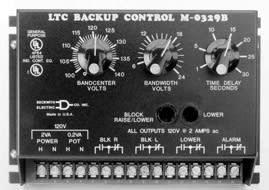BillyBob2021
Electrical
Hello,
I’m working at a distribution substation that has two feeders, each feeder has three voltage regulators (single phase regulators). I’ve been keeping track of how many times each month these regulators operate and an overall yearly sum per phase.
Ive noticed that one feeder we will call it 9L2 operates pretty equally across each phase per month and so far the overall yearly total per phase is around 12,000 - 13,000 operations.
For feeder 9L1 I’ve noticed C phase operates a lot more frequently than B and A phases anywhere between 8000- 14000 times per month and has already reached close to 80,000 operations tor this year. Whereas A and B phases operate less and have a total of around 40,000 operations for the year each. What could cause the C phase to operate so much. I’ve checked the bandcenter, bandwidth, and time delay and the settings are all the same across ABC phases for feeder 9L1.
Settings 9L1= bandcenter 122v
Bandwidth 1.5v
Time delay 55 sec
Settings 9L2= bandcenter 122v
Bandwidth 1.5v
Time delay 90sec
Im guessing that the 9L2 changes less frequently due to the time delay setting. But I’m
Trying to figure out why the 9L1 C phase changes tap positions far more frequently than A and B.
Thanks
I’m working at a distribution substation that has two feeders, each feeder has three voltage regulators (single phase regulators). I’ve been keeping track of how many times each month these regulators operate and an overall yearly sum per phase.
Ive noticed that one feeder we will call it 9L2 operates pretty equally across each phase per month and so far the overall yearly total per phase is around 12,000 - 13,000 operations.
For feeder 9L1 I’ve noticed C phase operates a lot more frequently than B and A phases anywhere between 8000- 14000 times per month and has already reached close to 80,000 operations tor this year. Whereas A and B phases operate less and have a total of around 40,000 operations for the year each. What could cause the C phase to operate so much. I’ve checked the bandcenter, bandwidth, and time delay and the settings are all the same across ABC phases for feeder 9L1.
Settings 9L1= bandcenter 122v
Bandwidth 1.5v
Time delay 55 sec
Settings 9L2= bandcenter 122v
Bandwidth 1.5v
Time delay 90sec
Im guessing that the 9L2 changes less frequently due to the time delay setting. But I’m
Trying to figure out why the 9L1 C phase changes tap positions far more frequently than A and B.
Thanks

